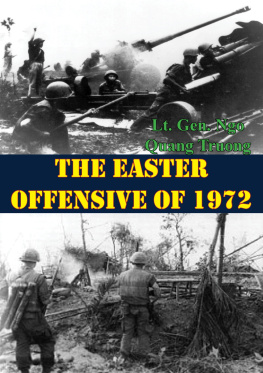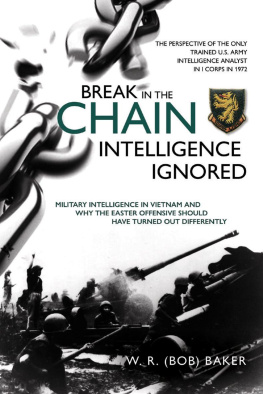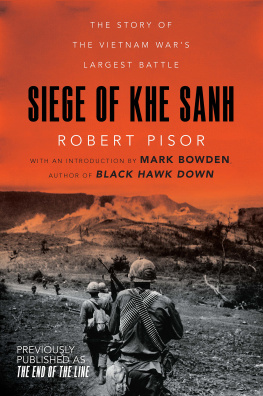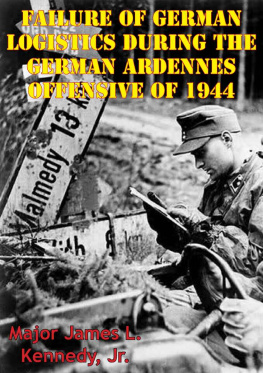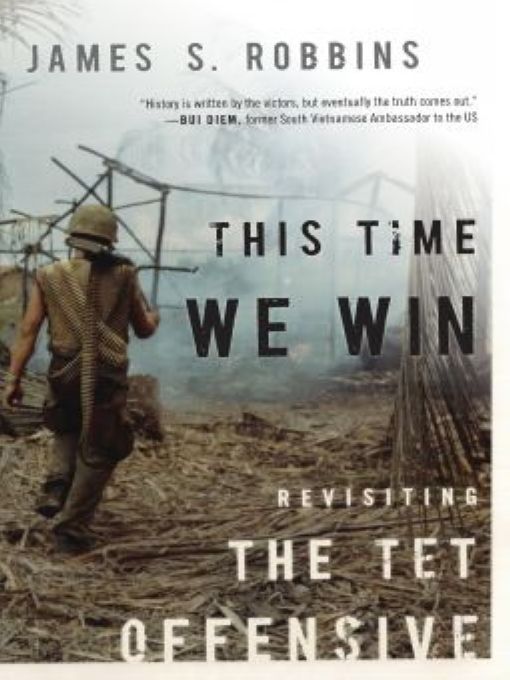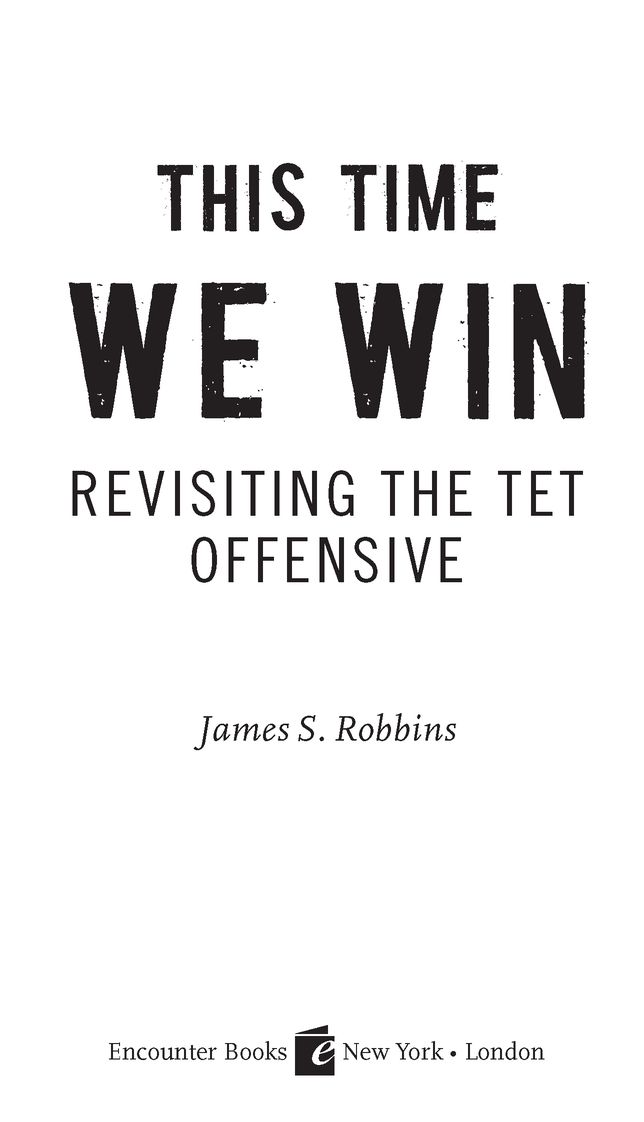Table of Contents
Some parts of this book were adapted in whole or part from previously published essays by the author appearing in National Review Online, including, inter alia, Why Baghdad Fell, Apr. 14, 2003; Baghdad Tet: How the Bad Guys Can Win, Mar. 15, 2006; Hue, Again (and Again), June 21, 2006; Anchorman: The Legend of Walter Cronkite, July 27, 2006; Civil War in Iraq? Nov. 30, 2006; Inventing Atrocities, Aug. 10, 2007; Tet +40, Jan. 31, 2008.
to
E.L.R.
I.
INTRODUCTION
You had to see the low walls of enemy dead stacked like cordwood outside that ring of armor to understand our bewilderment when we read that we had been defeated.
COLONEL MICHAEL D.
MAHLER, 3/5TH CAVALRY,
VIETNAM 1967-68
Most of what people hear about the Tet Offensive is wrong. The 1968 battle during the Vietnam conflict is billed as the moment when public support for the war effort, already rocky, dropped out. Allied forces quickly won the battle, but news reports exaggerated the scale of the attacks and the destruction they wrought, generating a sense that the contest had ended in a draw at best. Antiwar sentiment surged, and a harried President Lyndon Johnson bowed to public pressure and chose not to run for re-election. The battle marked the dividing line between gradual progress toward an ill-defined victory and slow descent to a humiliating defeat. At least this is the received wisdom of Tet.
It is now commonly understood that Tet was a U.S. military victory but a political defeat. Yet at the time the battle was widely considered an American defeat in both respects. The enemy attacks were seen as largely symbolic, in which success was measured not by seizing and holding square miles of territory but commanding column inches of newsprint and minutes of television air time. The fact that the enemy was swiftly defeated on the ground was immaterial; that it could mount an attack at all was considered a military triumph. This impression was promoted by the press, antiwar activists, North Vietnamese propagandists, and President Lyndon Johnsons domestic political opponents.
Many still believe that the enemy intentionally staged a symbolic attack in order to send a message, to gain advantage in negotiations, or to get the Americans to the bargaining table. That perspective diminishes the magnitude of the Communist defeat by defining North Vietnamese objectives down to what they achieved. But Tet was not an attempt by the North Vietnamese and Viet Cong simply to send a message. It was a last-ditch, desperation assault seeking a victory they saw slowly but surely slipping away. The North Vietnamese sought to foment a general uprising of the South Vietnamese people, to overthrow the Saigon government and force a Communist triumph. But despite frantic attacks by Viet Cong guerrillas and North Vietnamese regulars, the hoped-for popular uprising did not take place, and after a few days fighting the majority of the Communist forces were driven off or destroyed. It was a historic, catastrophic failure.
Decades after the disastrous offensive, Tet continues to shape perceptions of American conflicts. Tet has become more than a battle; it is a legacy, a legend, a continually replicating story line. It has become a powerful symbol divorced from its reality. The Tet narrative is fixed deep in the historical memory of those old enough to remember it, of those slightly younger who experienced its echoes, and especially of the generations who received the version of events rendered by historians and reporters after the fall of South Vietnam in 1975, when the arrival of defeat affirmed their long-standing belief in its inevitability.
Tet is kept alive by the pervasive use of analogy in public discourse, not as an analytical framework to better understand or contextualize events but as a form of shorthand used to brand those events for media consumption. Such analogies are exercises in perception management, whether or not they have anything to do with the course and conduct of the insurgency or terrorist threat in question. The Tet story line is always lurking when U.S. forces are engaged against weak, unconventional enemies that lash out under limited and exceptional circumstances and briefly capture the attention of the media. Tet is then refought in these new guises, amplified in the media/political echo chamber. The battle is a handy framework for revisiting familiar themesintelligence failure, war crimes, terrorism, troop surges, leadership breakdown, and media bias, among others.
There is a tendency in some quarters to give an A for effort to any collection of terrorists, insurgents, guerrillas, or other thugs who momentarily shock public perception through sudden, unanticipated acts of violence, regardless of whether they achieve any significant objectives. Tet has become the standard an enemy has to meet in order to achieve victory, not actually winning, not prevailing on the battlefield, but seeming to, or in some cases simply trying to. It is a self-imposed asymmetric disadvantage that is difficult to overcome. More important, it is a standing invitation to our enemies to seek low-cost, dramatic, and violent means of achieving high-impact strategic effects.
Americas humiliation in the Vietnam War has inspired contemporary terrorists and insurgents of many stripes. The current crop of terrorists well understands the Tet dynamic. Osama bin Laden has long known that the United States cannot be defeated in a stand-up, symmetrical, conventional struggle. In 1996 he wrote,
due to the imbalance of power between our armed forces and the enemy forces, a suitable means of fighting must be adopted, e.g. using fast-moving light forces that work under complete secrecy. In other word to initiate a guerrilla war, in which the sons of the [Muslim] nation, and not the military forces, take part. And as you know, it is wise, in the present circumstances, for the armed military forces not to be engaged in conventional fighting with the forces of the crusader enemy.
Bin Laden and other terrorists have routinely mentioned Vietnam as a model for the type of victory they are seeking, a debilitating blow to the American will that results in demoralization at home and withdrawal of the troops abroad. Central to al Qaedas assessment of the United States is that our country cannot tolerate a long-term struggle, and can be defeated by striking at the national morale. Prussian military theorist Karl von Clausewitz posited a trinity essential for the successful prosecution of war, requiring synchronization with three necessary elementsthe fighting forces, the political leadership, and the national will. The terrorists realize they cannot defeat our military or sway the political leadership directly, so they seek to strike at our critical vulnerability, our national commitment to continue to prosecute the struggle. In a February 2003 message bin Laden stated,
We can conclude that America is a superpower, with enormous military strength and vast economic power, but that all this is built on foundations of straw. So it is possible to target those foundations and focus on their weakest points which, even if you strike only one-tenth of them, then the whole edifice will totter and sway, and relinquish its unjust leadership of the world.








